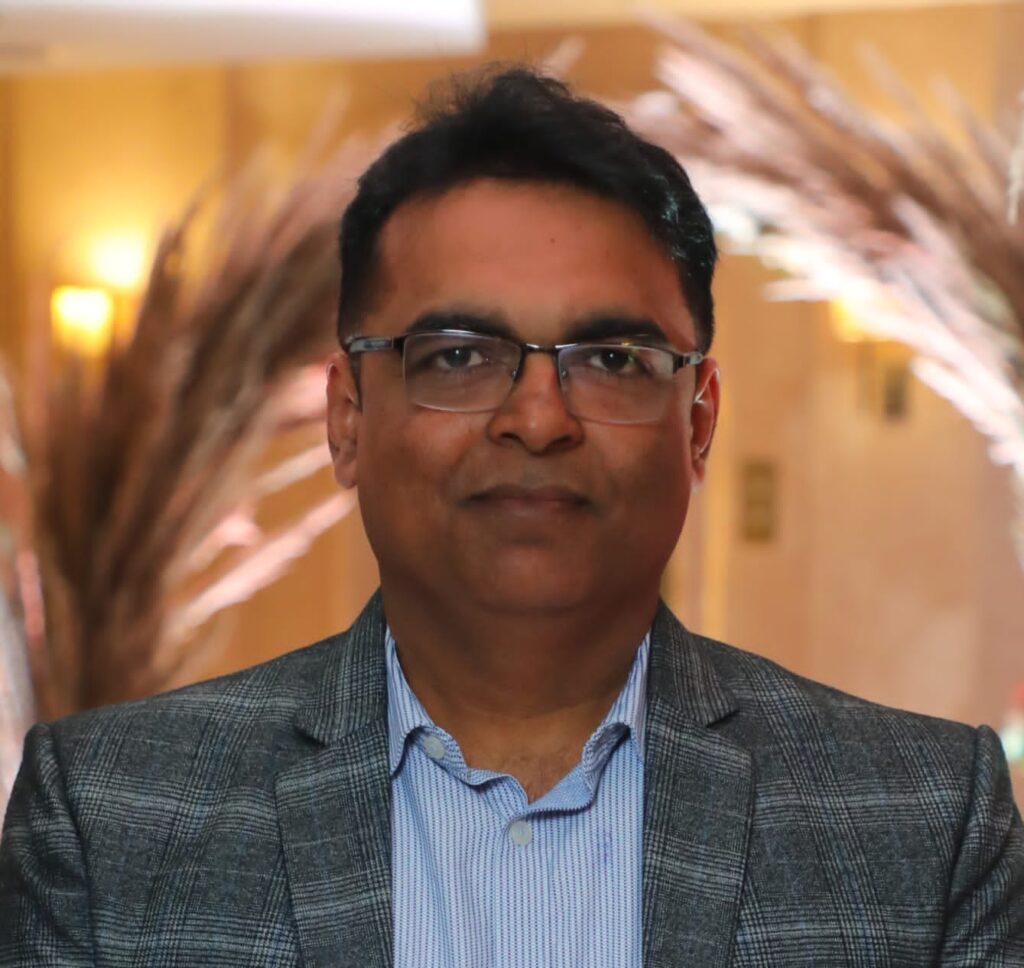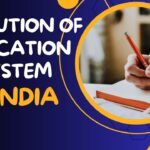Educational System in India was traditional, rooted in ancient scriptures like the Vedas and Upanishads, emphasized holistic learning encompassing subjects like mathematics, philosophy, and spirituality. Students were taught through oral tradition and close mentorship, fostering deep understanding and character development alongside academic knowledge.


Gurukul was the hometown of teachers where students come after completing their initiation ceremony and learn until the completion of their study. The parishads or academies were the places of higher learning and education where students learn through discussions and debates. Goshti or conferences were the places where the kings of the states used to invite scholars from every institute to meet and exchange their views. Ashramas or hermitages were the other learning centers where students from various parts of the country used to come and learn from saints and sages. Vidyapeeth was the place of spiritual learning founded by great Acharya, Sri Shankara in places like Sringeri, Kanchi, Dwarka, and Puri, etc. Agraharas was an institution of Brahmins in villages where they used to teach. Viharas were the educational institutions founded by Buddhists where the students were taught the subjects related to Buddhism and philosophy.
Higher educational institutions
Takshashila was the famous center of learning, including religion and teaching of Buddhism in ancient times. It was famous for his higher education learning comprising of subjects like ancient scriptures, law, medicine, sociology, astronomy, military science, and 18 silpas, etc. The well-known scholars from the university were great grammarian Panini, he was an expert in his subject of grammar and published his work on Ashtadhyayi, Chanakya who is skilled in statecraft both studied here. Students from Kashi, Kosala, Magadha, and also from different countries flocked into the university despite a long and arduous journey. Takshashila was an ancient Indian city currently situated in north-western Pakistan was the well-known center of learning and has been declared as an archeological site and world heritage by the United Nations Educational, Scientific, and Cultural Organization (UNESCO) in 1980.
Nalanda: When Xuan Zang came to Nalanda it was called Nala, which was the center of learning in many subjects. The students used to come here from different parts of the country and the world to study here. Different subjects were taught, including the Vedas, fine arts, medicine, mathematics, and astronomy. Xuan Zang itself became the student of Yogashastra. Nalanda which is currently situated in Rajgir, Bihar, India was also declared as a world heritage site by UNESCO. The other famous institutes around ancient times were Vallabhi, Vikramshila, Ujjain, and Benaras.
Medieval education
During the eighth century Anno Domini (A.D) a huge number of Mohammadian invaded India. Mahmud Ghaznavi captured India and set up a large number of schools and libraries in the country by the looted wealth. Later Muslim leaders established their permanent empire in India, they brought a new system of education. The ancient education system was drastically changed. The Arabs and the Turks bought some new cultures, traditions, and institutions in India, in that the most remarkable change was the Islamic pattern of education which was different from the Buddhist and Brahmanic education system. The medieval age, education system primarily focused on the Islamic and Mughal System. The main objective of education during the medieval period was the spread of knowledge and the propagation of Islam. The objective behind this era of education was to spread Islamic education its principles, and social conventions. The purpose of the education system was to make people religious minded.
Characteristics of education
The rulers helped in the spread and development of education. They helped in the establishment of different educational institutes and funded it, big landlords also gave them some wealth in the development of institutes. There was no control of rulers over the educational institutes and also to their management. The student-teacher relation was also good like the Buddhist and Brahmanic period, although students did not live with their teachers at that time. Teachers took interest in learning, at that time teachers were used to teaching students individually.
Curriculum
During that time books were not there, therefore the students were used to write on taktis. The stress was laid on teaching the student from the beginning that is teaching them first alphabets and then words. Calligraphy and grammar were the most important subjects taught during those days. Students also learned “paharas”(multiple of numbers), and also they memorized it while learning. Sanskrit, Hindi, Arabic and Persian were the main languages of communication and these languages were important for the students who wanted to get higher posts. The secular education consists of the study of Sanskrit, Arabic literature, grammar, history, philosophy, mathematics, geography, politics, economics, Greek language, and agriculture.
Modern education
In the middle of the medieval age, the British invaded India and started to capture it. The modern education was introduced during the British empire. In the 1830s Lord Thomas Babington Macaulay introduced the English language. The subjects and the syllabus were limited to some extent, the main aim of modern education of the British was to spread Christianity. As time passed education started to develop and entered into the modern era that is in the twenty-first century, the era of science, technology, and innovations. And the demand and the need for education stills remain the same as it was in ancient and medieval times. In the modern era of science and technology, the industrial sector is increasing day by day. As demand increases our education sector also needs to change and adapt to that environment.
Aim of education
The objective of modern education was to inculcate values in students such as equality, secularism, education for all, and environmental protection, etc. To understand the culture as well as people of our country, every student must be provided at least a minimum level of education and also to provide education to the people who cannot afford it, to prepare the students with the ever-increasing demands.
Characteristics of education
The student-teacher relations remained the same as it was in ancient and medieval, but students did not live in the teacher’s house. As technology is increasing day by day, the education sector is also following the trend of technology by teaching the students through online lectures and Massive Open Online Course (MOOC). In Aviation and the medical sector, more emphasis is on practical knowledge as compared to other sectors. Women’s education is giving more importance, and the Government has launched many programs to encourage women’s education. In the modern era electronics gadgets like projectors, Light Emitting Diode (LED), and computers are used to teach the students. The Government has established many programs and there are many organizations that promote education in India.
Curriculum
The whole curriculum of a student is divided into three sections primary, secondary, and graduation. Primary education is from 1st to 10th standard, Secondary education is 11th and 12th, and in Graduation, students were given the choice to choose a field for further studies example computer, electrical, civil, etc. But after secondary education students also have choices to choose their career path. In primary education, students are taught subjects like history, geography, mathematics, science, Hindi, and Marathi. The languages may differ from state to state. At the early stages, students were taught alphabets, poem recitation, word formation, etc. Different prayers, the National Anthem is also in the schools. Along with studies different sports and extracurricular activities are also conducted in schools to keep the students fit and for their all-round development.
The pupils are assessed based on the term exams conducted at frequent intervals. In secondary education, students are given choices to choose from science and commerce. According to the student’s choice, they were given an education. Secondary education is an advanced version of primary education. Pupils were assessed based on term examination. After secondary education, students were given entry to the universities through some entrance examination, according to their marks scored in entrance examination they are admitted to the universities. Pupils were assessed based on semester exams or in-sem exams.
In modern education along with studies, the emphasis is given on extracurricular activities and sports for all-round development of students.
Methods of learning
Students mostly learn concepts through online platforms like YouTube, Courser, and Udemy.Students refer to the notes given by the teacher’s side by side while learning online. During class hours’ doubts are solved through discussions, debates, etc. Pupils were assessed based on mid-sem written exams and practical exams to check their practical knowledge.
Educational institutions
Schools: Schools are the educational institutes where children are sent for their primary education. There are many private and government schools situated in India, primary education means education from Nursery to 10th standard. Children at their early ages are sent to schools to learn poems, grammar, prayers, alphabets, etc. besides this, the other subjects taught in the schools are English, mathematics, science, history, geography, and other regional languages. Schools are situated inside the city, also there are many cultural programs and sports events conducted in schools for the students to develop their interpersonal and physical skills. Private schools are run by organizations and the principal manages the academics and cultural activities in schools.
Colleges: After completing primary education from schools, students are sent to colleges for secondary education. After primary education, students are required to give entrance exams to take entry into colleges and according to the marks scored in entrance exams students are allotted colleges. In some states, during college, they are advised to choose a stream from science and commerce and then further carry on their secondary education. College education consists of 11th and 12th standard. Different subjects taught in secondary education according to their streams are physics, chemistry, geometry, algebra, accounts, and many other regional languages.
University: After the secondary education, students are required to give the entrance exams like Joint Engineering Entrance (JEE) and other state-level exams to take admissions in universities. Students are given choices to choose a stream like a computer, electronics, civil, and Mechanical and then start their career in it. The University provides undergraduate and postgraduate course comprising of course duration of 4 and 3 years, different universities in India are Savitribai Phule Pune University, Mumbai University, and many other aided non-aided and private universities like Shree Guru Gobind Singh Tricentenary University, Gurugram, Haryana. There are many cultural and sports events conducted in SGT university for giving students some time to joy and relax from studies.
Higher educational institutions
Indian Institute of Technology: It is one of the greatest universities in India for higher education like undergraduate, post-graduation, and many more streams. There is a total of 23 IIT colleges in India, every year lakhs of students compete to take admissions in these IIT’s. JEE-Mains and JEE-Advance are the two entrance examinations to take admission in these IIT’s, according to the All India Rank (AIR) and marks students are allotted IIT’s. Due to its high level of educational teaching and curriculum, IIT is famous all around the world. The other top universities are Birla Institute of Technology and Science (BITS), National Institute of Technology (NIT), Indian Institute of Science (IISC)and AIIMS.


Dr. Vivek Kumar Jha
Prof. and H.O.D
Department of Audiology and Speech Language Pathology
Faculty of Allied Health Sciences,
Shree Guru Gobind Singh Tricentenary University,
Gurugram, Haryana.











